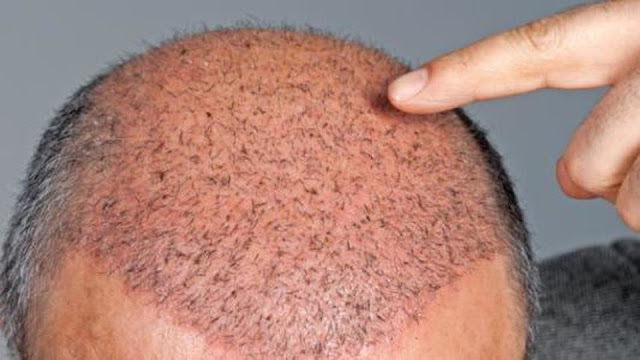Hair Loss Diagnosis Hair loss treatment | healthy care
Hair Loss Diagnosis Hair loss treatment
Diagnosis of hair loss
The correct diagnosis will help the majority of hair loss sufferers. As a dermatologist can examine the patient and diagnose the cause of hair loss and baldness, then he knows whether this phenomenon will disappear on its own or whether there is a need to give
Hair Loss Treatment
Dermatologists and surgeons perform several types of surgeries aimed at restoring hair, restoring it, and restoring the places from which it fell, in addition to giving the hair a natural look, as possible.
The people who are most likely to undergo such surgeries, and who need them most, are those whose baldness appears most noticeable, who have very light hair and whose hair falls out due to scalp injury or as a result of burns.
The type of operation to restore hair is determined by the extent and shape of baldness. The dermatologist can recommend one of the below-detailed types of surgeries, in order to get the best possible result.
Hair Transplantation
Hair transplantation depends on the "prevailing donation" principle (preferred), that is, taking hair from a healthy location and transplanting it, during the surgery, in order to grow again in the place affected by baldness. Hair transplantation requires the following:
Removal (Streaks) of the skin of the scalp: which contains hair from the back and sides of the scalp (these places are called "donation areas" since they contain hair that continues to grow for life).
Repair and restoration of the "donation area": a process that usually results in the appearance of a small scar, which is covered by the surrounding hair.
Cut scales from the skin of the scalp: which contains the hair, from the donation area, and divide them into groups of implants (implants) in order to transplant them into bald spots prepared for that.
The area that can be covered by hair transplantation varies according to the size of the bald spot and the method of transplantation.
After about a month of the procedure, the bulk of the transplanted hair falls out. Two months later, new hair begins to grow and then continues to grow at a normal pace. After six months, the transplanted hair will acquire a look and feel similar to that of the natural hair.
Scalp (Skin) Shrink
Shrinking the skin on the head is a solution for those who suffer from widening baldness.
This treatment is a surgical procedure during which the space of bald spots is narrowed and, in some cases, it is completely hidden, by removing some centimeters of hair-free skin, and then tightening the ends of the pieces toward each other and connecting them to the future.
The scalp reduction process can be done on its own or combined with another hair transplant.
Scalp Skin Expansion / Tissue Tightening
Two devices are implanted under the skin of the scalp for three or four weeks. The function of these two devices is to tighten the skin that holds the hair, in order to encourage and improve the results of the surgery to shrink the skin of the scalp.
The tensioning device works with a technology similar to the elastic band, while the expansion device works like a balloon. They make it possible to reduce the amount of hair-free (bald) skin on the scalp.
| --- | Anesthesia: Hair loss treatment is performed under local anesthesia, in a dermatologist’s office, in a private clinic, or even in the framework of a hospital.
| --- | Daily activities: The ability to return to his daily routine activities, while refraining from undertaking major physical exertion or sporting activities until the doctor permits him to do so.
| --- | Side effects: mild side effects appear, which may include: swelling and bruising around the eyes for two to three days (these side effects can be reduced by using ice packs and sleeping in a half-sitting position). In addition, the patient may lose sensation in the area from which the transplanted hair was taken, or in the area in which it was implanted. But this loss of sensation usually resolves in a period of no more than three months.
| --- | Complex treatment: The treatment can be a combination of several medical procedures at different and different times, which means that the completion of treatment may require a long period of time that can last from a few months to a few years.
In all types of surgeries, there are always certain risks that may be part of this procedure. But post-treatment complications for hair restoration and repair are very rare.




















Thanks for sharing such beautiful information with us. I hope you will share some more information about hairs. Please keep sharing.
ReplyDeleteOnline Hair Care Oil